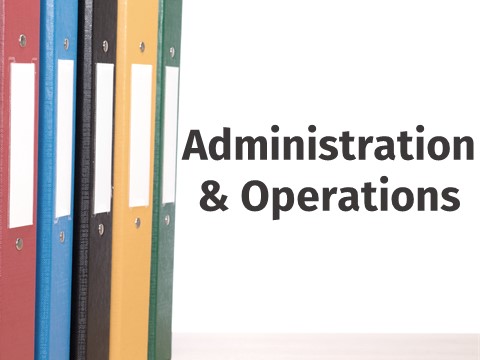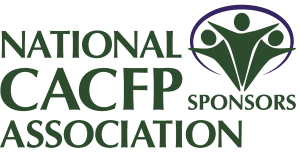Child Nutrition Emergency Operational Costs Reimbursement Programs: Q&A #2
3/15/2021

Summary:
This Q&A accompanies the release of the state agency supplemental Implementation Plan Templates for use in the Child Nutrition Emergency Operational Costs Reimbursement Programs.
The following are Q&As related to CACFP. Additional questions specifically for State agencies can be found in the full text. Read the full text HERE.
Payment Calculations
8. Must funds received by CACFP program operators as cash-in-lieu of commodities be included in the calculations for payments under the reimbursement programs?
No. Only Child Nutrition Program reimbursements specified under the statute and further detailed in policy memo SP 06-2021, CACFP 05-2021 must be taken into account for the purposes of calculating payments. These do not include the value of commodity entitlements or cash-in-lieu received thereof.
9. Last year, FNS made CARES Act funds available to State agencies to pay program operators for Child Nutrition Program reimbursements. Are these included in the calculations for payments under the reimbursement programs?
Yes, but only in this specific circumstance.
10. Do any additional resources or funding streams, such as State agency-level support to Child Nutrition program operators, need to be taken into account when determining eligibility or calculating payments?
No. Only Child Nutrition Program reimbursements specified under the statute and further detailed in policy memo SP 06-2021, CACFP 05-2021 must be taken into account for the purposes of calculating payments.
11. If a program operator qualifies as “new” but only filed a claim for one of the two months of January/February 2020, how do they calculate the alternative reference period? Do they use only one month for the calculation, or is it still an average?
The average reimbursement for January and February 2020 will still be used to calculate the alternative period. If the program operator filed a claim in only one of the two months, then they effectively divide the total for that single claim by two.
12. If a program operator did not file reimbursement claims in any or all of the reimbursement months (March - June 2020), are they still eligible for payments under these programs?
Potentially yes. If a program operator fully suspended operations in all or some of the reimbursement months (March – June 2020), they still may be eligible for payments. If the program operator had valid claims during either of the applicable references periods (the same months in the year 2019 or Jan-Feb 2020), the payment calculation would yield a positive result.
13. If a sponsor did not operate in April 2020 (or another reimbursement month), will they simply receive 55 percent of their claim from the applicable reference month/period?
Yes. As there is nothing to subtract from the reference months claim, the program operator would receive 55 percent of their claim from applicable reference month in 2019 or the alternative reference period. In such cases, the operator will receive the maximum possible benefit under the calculation formula.
14. How should payments be calculated in the case that a program operator filed a consolidated March/April claim due to a lack of operating days in March?
In the case that a program operator filed consolidated March/April claims as permitted under the regulations at 7 CFR 210.8(c)(1), 7 CFR 220.11(b), and 7 CFR 226.10(e), the State agency may run the applicable payment calculation, using that consolidated claim, for the month of April.
15. If a program operator changes their number of weekly operating days, are any modifications to the payment calculation necessary?
No. All payment calculations are based on the total monthly reimbursement received by the program operator.
17. If the State agency cannot confirm whether a local program operator was open or in-session for a given month during the reimbursement period, should that month still be included in the reimbursement calculation?
Potentially yes. The absence of a claim during the reimbursement period does not denote eligibility for a payment; it simply means that there is no amount to deduct from the reference period for that month. If the program operator has a claim from the applicable reference month/period, they should be eligible for a payment.
Program Operator Eligibility
18. Do local program operators need to apply to either their State agency or FNS to receive a payment?
No, program operators are not to be made to apply for a payment they are owed under the calculation formula.
19. Are program operators still eligible for payments if their net cash resources are positive, or in the case of SFAs, if they currently have a three month operating balance as described in 7 CFR 210.19(a)(1)?
Yes. The current balance of a program operator’s nonprofit food service account is not taken into consideration under the calculation formula outlined in statute and guidance from FNS.
20. If a program operator participates in both School Meal programs and CACFP, are they eligible for payments under both programs?
Yes. There is no restriction on receiving a payment under both reimbursement programs where applicable.
21. If a program operator began administering Child Nutrition Programs later than February 2020, are they eligible for payments under the reimbursement programs?
If a program operator didn’t begin operations until after either of the reference periods specified in the statute, they are not eligible for payments under these reimbursement programs.
22. If an unaffiliated center or day care home switched sponsors during the reference or reimbursement periods or any time thereafter, may they still receive a payment under the CACFP reimbursement program?
Yes. If a program operator changes sponsoring organizations, this should not impact their eligibility for a payment. When unaffiliated centers and day care homes move to a new sponsor, relevant documentation (including claims data) should be retained and made available as needed.
Financial Management and State Administration
23. Do payments made under either of the reimbursement programs need to be treated as regular reimbursement funds and deposited into the program operator’s nonprofit food service account?
Yes. All payments made to eligible Child Nutrition program operators must be deposited to that program operator’s nonprofit food service account, and will be subject to the same performance/allowable cost rules as other reimbursement funds.
24. Will the Child Nutrition Emergency Operating Costs Reimbursement Programs be assigned a Catalog of Federal Domestic Assistance (CFDA) number?
Yes. These reimbursement programs may be cited under the following CFDA numbers:
Child and Adult Care Food Program Emergency Operational Costs Reimbursement Program: 10.558
28. Must the State agency remit payments to unaffiliated centers and day care homes directly, or can they be paid through their sponsoring organizations?
FNS is not establishing a requirement in terms of how specifically these payments must be routed to the proper nonprofit food service account. However, we would expect State agencies to make these payments under the same structure they typically make any other payments, which in the case of family day care homes and unaffiliated centers would be via their sponsoring organizations.
